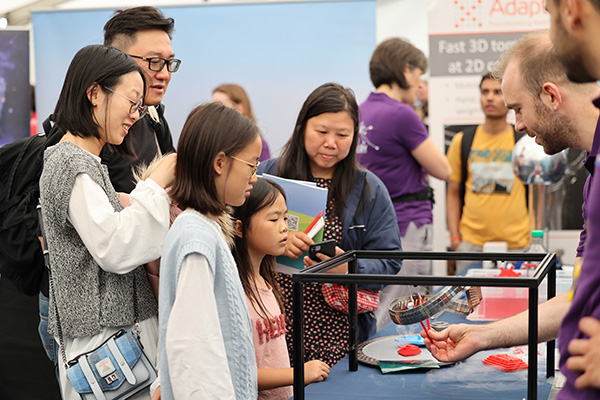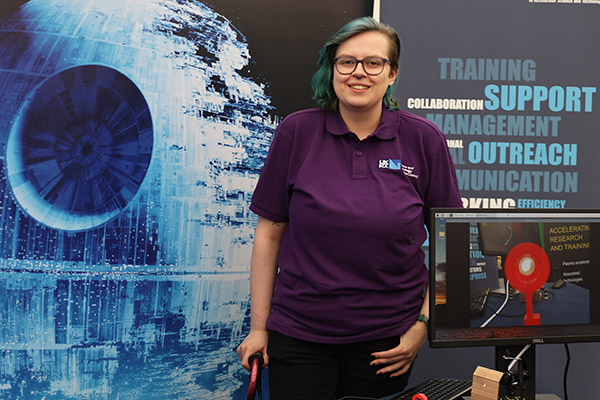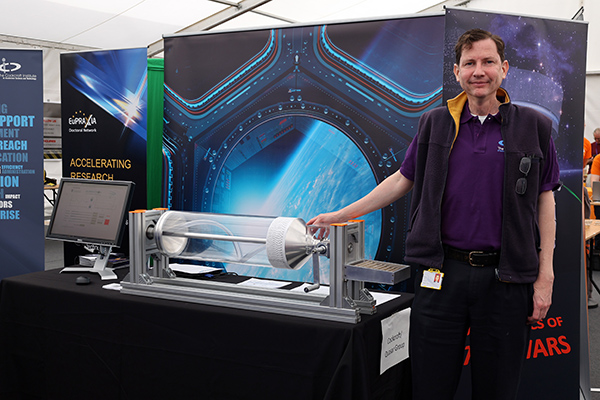QUASAR group shine at Daresbury Open Week

An Open Week for the public and for groups of schoolchildren has taken place at Daresbury Laboratory, where the University of Liverpool’s QUASAR Group are based as part of the Cockcroft Institute. The Open Week ran from 10-15 July and attracted visitors from around the North West region and beyond. A total of 1500 schoolchildren visited the site over two days at the beginning of the week and over 5,000 members of the public visited the site for the Public Open Day on the Saturday.

The QUASAR Group presented ‘The Physics of Star Wars’.
The QUASAR Group presented ‘The Physics of Star Wars’. This project was originally established in 2017 as part of an STFC funded outreach project and has continued to be used many times since. Each time the exact content that is delivered is updated to reflect the new projects that have started in the group since the original project took place. It is also done to ensure that the content is suitable for the audience and location. The QUASAR Group had a large area in the ‘Wonder Marquee’ to show off their various demonstrations at the Open Week.
Several group members are part of The LIV.INNO CDT that was represented by a stand all about medical physics. The stand presented the work that is being done with Adaptix by Lauryn Eley, who is currently undertaking her PhD. Visitors to this stand could find out about how X-rays propagate and how we can use different types of light that we cannot see.
The EuPRAXIA project was represented by the Surfatron stand. The Surfatron is both a simulated online game and a mechanical simulation of how electromagnetic waves are used to accelerate particles in particle accelerators. In both versions of the set up you have to ensure that the frequency of the accelerating wave is correct and that the time the particle is injected is optimised to achieve the greatest acceleration.

The Surfatron simulated how electromagnetic waves are used to accelerate particles in particle accelerators.
There were several other demonstrations which showed how accelerators work. These included demonstrating the Meissner effect and flux pinning on both a flat track and a 3-D Mobius strip and using a Van de Graaf generator to show how electric charge can make things move. Simple demonstrations of magnets and magnetic fields were available for younger children and a demonstration of how lenses can be used was also on display.
QUASAR Group leader Professor Carsten Welsch gave a talk about the Physics of Star Wars at the Public Open Day on the Saturday. In this talk he explained how some of the physics which is undertaken in the QUASAR Group can potentially be used to explain phenomena seen in the Star Wars films. The talk was attended by a large audience who enjoyed it very much.